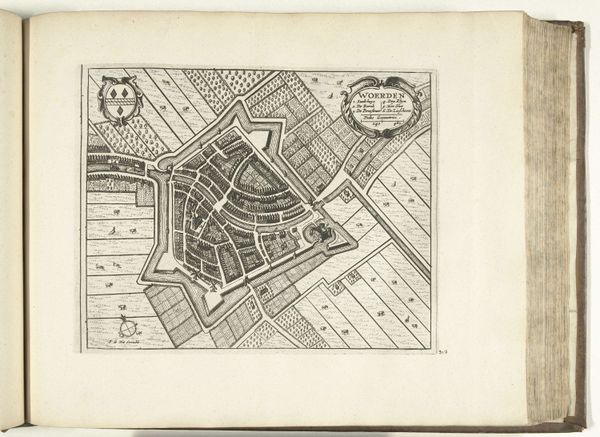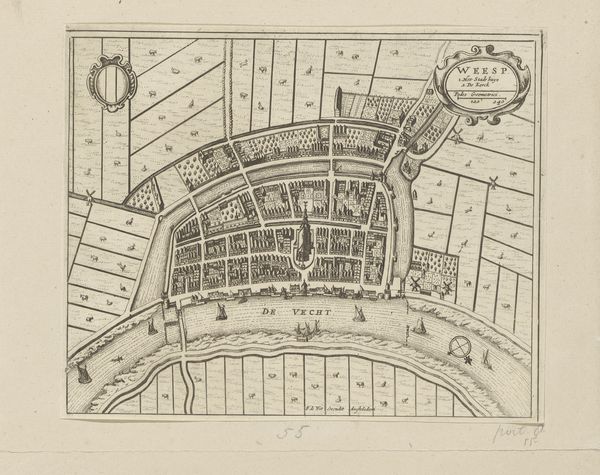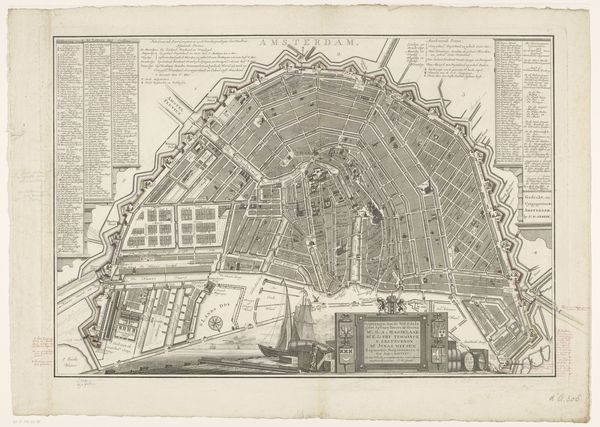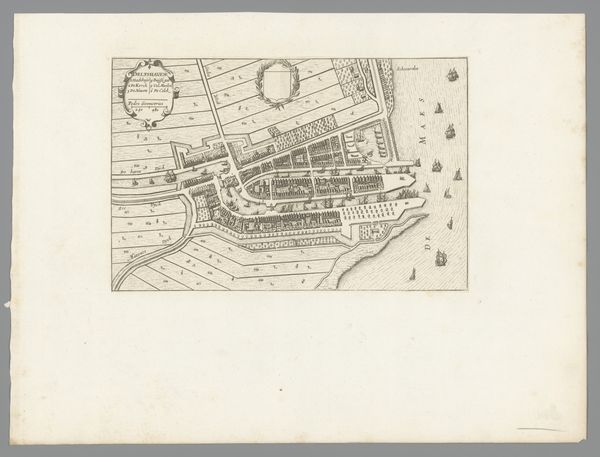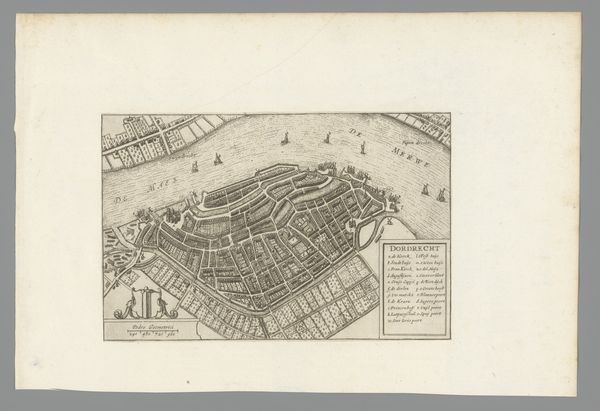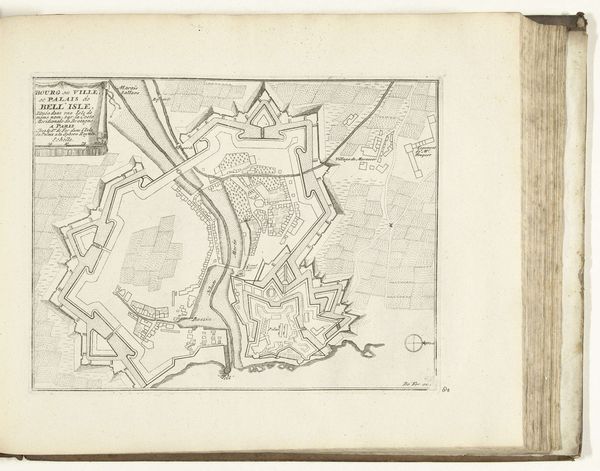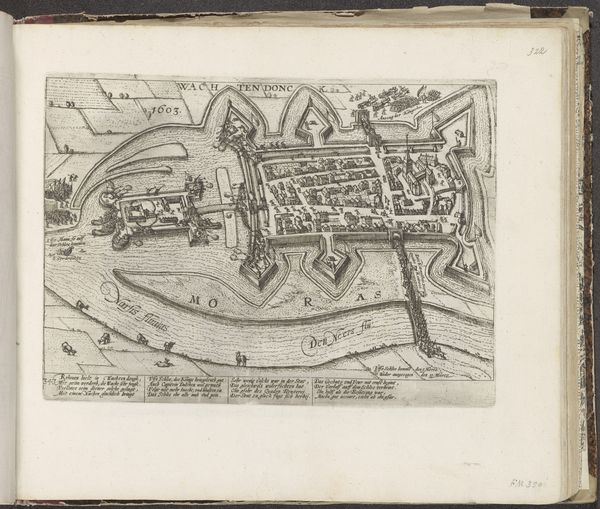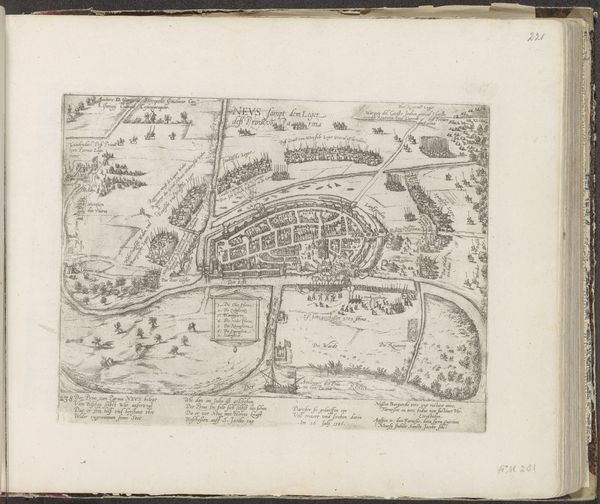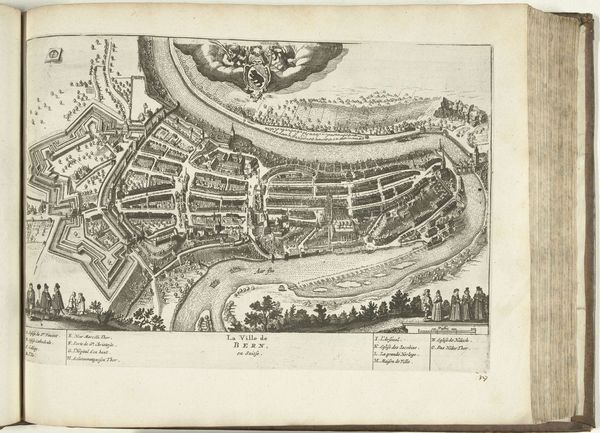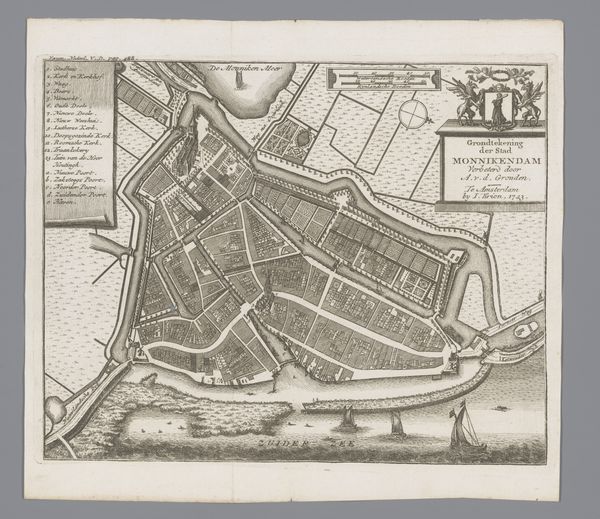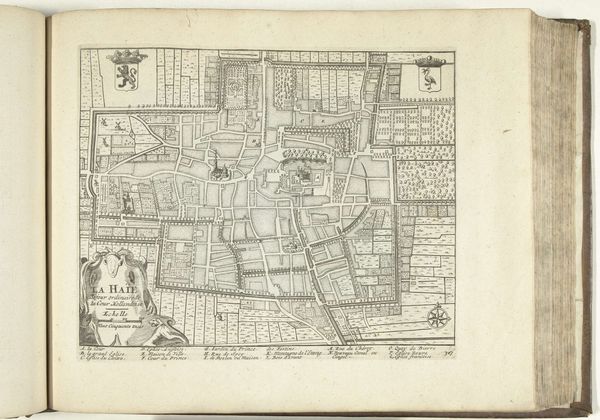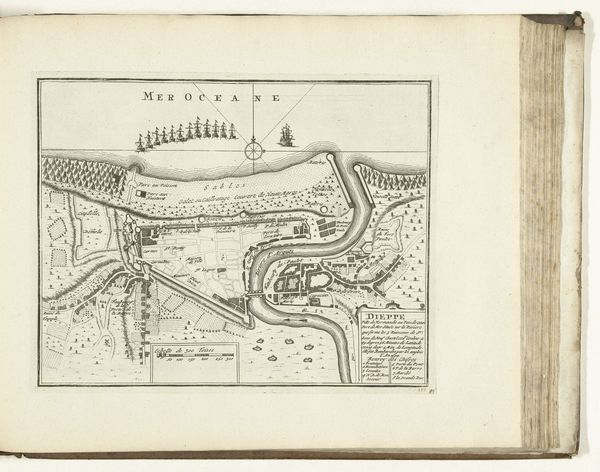
print, engraving
#
dutch-golden-age
# print
#
geometric
#
cityscape
#
history-painting
#
engraving
Dimensions: height 210 mm, width 263 mm
Copyright: Rijks Museum: Open Domain
Curator: Here we have an engraving titled “Plattegrond van Muiden, 1726,” showing a plan of the city. It’s an anonymous work, part of the Rijksmuseum collection, offering a bird's-eye view of the town. Editor: It's striking how orderly and rational it appears, almost like a blueprint rather than a portrait of a lived-in space. All these fields, divided with incredible detail and geometrical form. Curator: That's typical of Dutch Golden Age mapmaking. These weren't just about navigation; they were also about power, ownership, and controlling territory, especially regarding consumption and agricultural distribution. Notice the precision of the lines; engraving allowed for very fine detail. Editor: Yes, you can really appreciate the labor involved in producing something like this by hand. Imagine the time spent etching those lines! The material of the paper and ink is almost secondary; it is about capturing that human intervention, a representation intended for control. The use of line and pattern feels almost… industrial. Curator: Indeed! Maps like these played a role in defining and enforcing spatial control. It projects Dutch ambition outwards to a public eager for images of this burgeoning world. Its placement in books also points to that intersection of wealth and influence with the art of collecting and seeing. Editor: It brings to mind contemporary debates around surveillance and data collection. Today our landscapes are mapped in entirely new ways and at increasing rates, this image is part of that longer process of societal and global understanding. Curator: Absolutely, its historical and art historical importance allows for a broader commentary on our relation to maps as artworks as well as sociological devices of control. Editor: Considering that, I see even more than before—it's about representation, labor, ambition, and control! Curator: Indeed. Maps can tell complex stories, engaging both history and process.
Comments
No comments
Be the first to comment and join the conversation on the ultimate creative platform.
